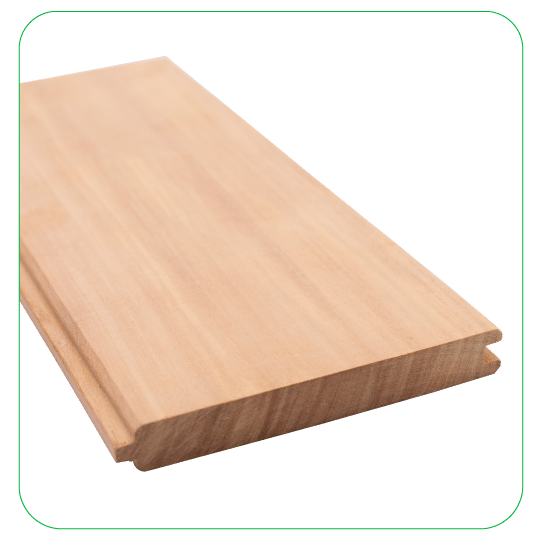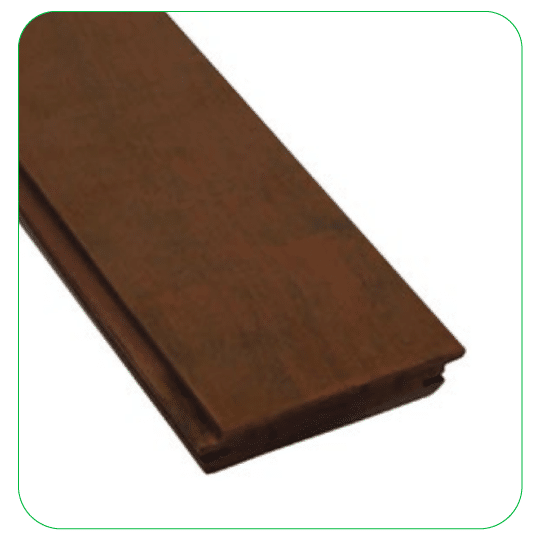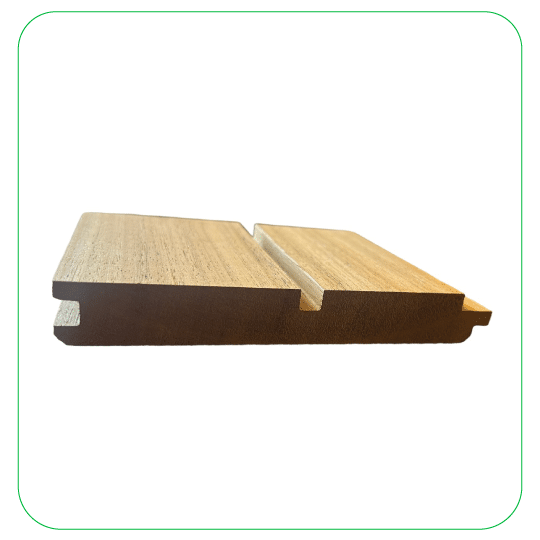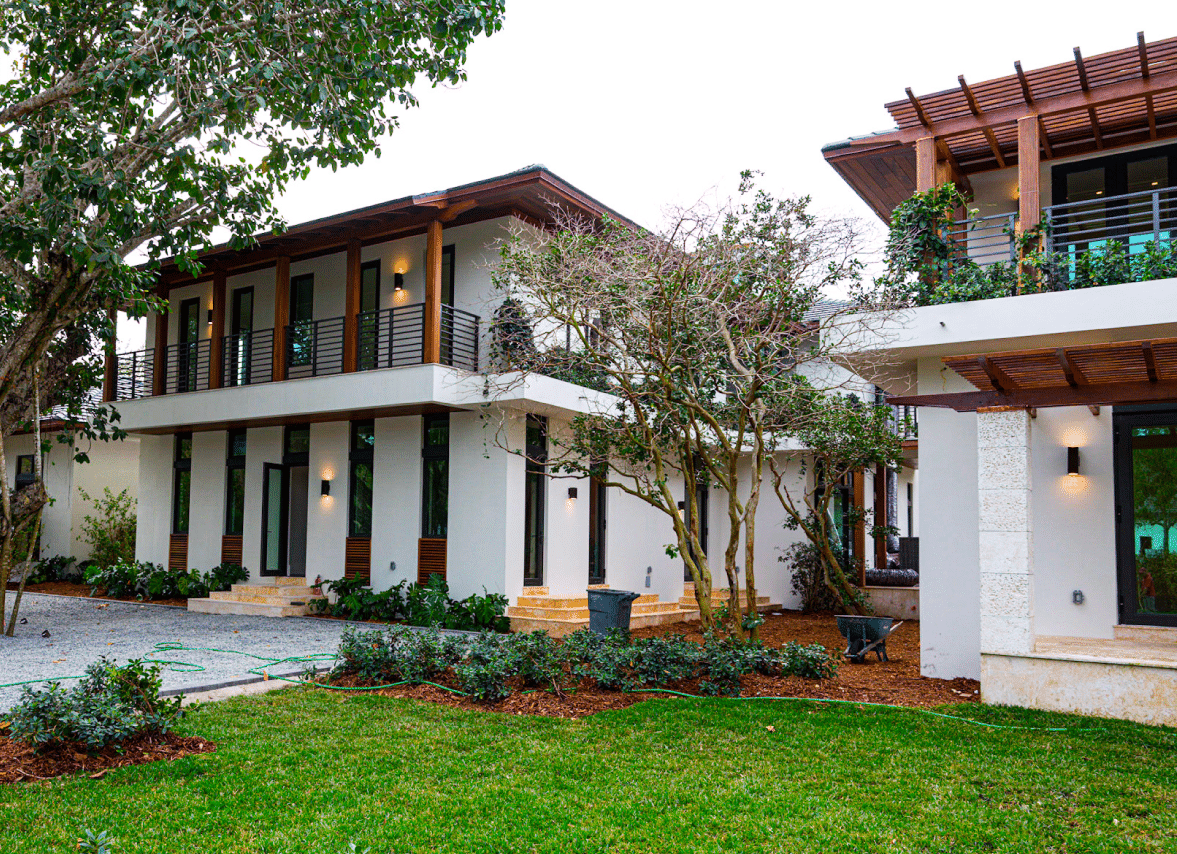In House Custom Milling
Brazilian Lumber Offers Milling Services For The Different Types Of Hardwood And Lumber.
We use European technology to mill your decking lumber to your desired profile. We offer a range of profiles to choose from, including tongue and groove, V-joint, nickel joint, pre-grooved one side, pre-grooved two sides, shiplap, and rainscreen.

We Offer The Following Milling Profile
*Note: These recommendations may vary depending on the specific type of hardwood shiplap being installed. Always refer to the manufacturer’s installation guidelines for specific instructions.

Tongue and Grooved

Nickel Joint

Pre-Grooved One Side

Pre-Grooved Two Side

Shiplap

V-joint

Rainscreen

Cypress

Flutted

Flutted

Flutted

Grad Concept Clip-On System
WE CAN MILL ANY OTHER PROFILE YOU MAY NEED!
Mill Custom Rafter Tails
We take pride in crafting rafter tails that are not just functional but also add a touch of architectural elegance to your space
• Craftsmanship: Our rafter tails are meticulously crafted with attention to detail.
• Customization: Tailor your rafter tails to fit your design vision.
• Quality: We use the finest wood materials to ensure longevity and durability.
• Experienced Team: Trust in our expertise to bring your design ideas to life.

Tongue and Groove
Tongue and groove means each board has an indented edge (grooved) and a ridge on the other side of the board (tongue). The tongue fits into the next board’s groove creating an interlocking system. This design is a great way to ensure your boards fit together perfectly.
The tongue and groove joint is amongst the most popular ways to connect two pieces of wood. There are several different ways you can mill a tongue and groove board, but they all require precise measurements and cuts. That’s where our top-of-the line machinery comes into play because we make sure that every cut is accurate using specifically engineered saw blades which give us incredible accuracy when making these profiles.
There are two different types of joints that can be formed from tongue and grooved boards depending on how they are milled. You can select from nickel-joints (this profile literally gets its name from the fact a nickel can stand between the boards once they are installed), and V-joint (which once installed leaves a v shaped indentation between the boards).

Do’s and Don’ts for Installing Tongue and Groove
Do’s
• Install tongue and groove boards only using screws.
• You can use plugs to hide screws when using tongue and groove boards.
• Tongue and groove can be used for milling for ipe, cumaru, jatoba, garapa, tigerwood and other types of tropical hardwoods
• Use tongue and groove for walls and ceilings
• Pre-drill your boards before installing
Don’t
• Do not install tongue and groove boards using clips.
• Do not install tongue and groove boards using nails.
• Do not install tongue and groove on exterior decks.
*Note: These recommendations may vary depending on the specific type of hardwood shiplap being installed. Always refer to the manufacturer’s installation guidelines for specific instructions.
Pre-Groveed – Two Sided or One Sided
Decking boards come in different forms depending on what project they are used for and what installation method is chosen. The grooved varieties feature notches or channels along the edges of the board. Boards can come as either grooved on both sides or grooved on one side.
Grooved boards are used when installing a deck with clips. This installation method is used so that there are no visible screws, giving the deck a seamless look. With grooved boards, a fastener system is used for installation. Installing grooved boards with hidden deck fasteners is not recommended in all climates, as screwing the decking boards to the frame makes them a bit more stable. Clips or hidden deck fasteners are inserted into the grooves which fasten the boards to the underlying structure (the joist or frame).
When installing boards on the edge of a structure or when installing boards for stairs, one sided grooved boards are used, as the channel (groove) is not aesthetically appealing and its sole purpose is for installation. With the one sided boards, the grooved side is used for installation and the non-grooved side is outward facing.

Shiplap
Shiplap is a type of milling profile that is used for walls where the boards fit together but will overlap. This is done so that the wall becomes “waterproof”. It is a wood paneling that can be used for interior and exterior walls and has gained popularity over the past several years. The name is curious, but it is derived from the fact that this type of installation was used to waterproof ships. This is why a shiplap wall may look more rustic, like a farmhouse or barn side.

Do’s and Don’ts for Installing Shiplap
Do’s
Vertical Installation
• You can install shiplap with screws.
• You can use plugs to cover screws when using shiplap.
• Use shiplap for ipe, cumaru, jatoba, garapa, tigerwood or any other type of tropical hardwood.
• Pre-drill your boards before installing if you are using screws
Horizontal Installation
• Install using Viking aluminum clips
• No pre-drilling is required if you are using Viking aluminum clips.
• Start at the bottom of the wall
• Be sure first board of wood is leve
Don’t
• You should not use nails for installing shiplap.
*Note: These recommendations may vary depending on the specific type of hardwood shiplap being installed. Always refer to the manufacturer’s installation guidelines for specific instructions.
Rainscreen
Rainscreen is a profile used commonly on exterior walls in order to waterproof them. This profile’s design ensures that any rain coming down on the side of a wall will drain out and not stay between the boards creating an opportunity for rot or mold. Rainscreen cladding provides protection for the exterior walls, ensuring the longevity of the wall. Rainscreen prevents water from seeping into the panel joints by creating a vertical furring strip behind the cladding allowing for ventilation.

Do’s and Don’ts for Installing Rainscreen
Do’s
• Rainscreen should be installed using specialized rainscreen clips
• Rainscreen can be used for ipe, cumaru, garapa, jatoba, tigerwood and all other types of tropical hardwood.
• Because the rainscreen profile takes up part of the board you should only mill wider length boards such as 1×6.
Don’ts
• You should not use nails for installing rainscreen.
• Use Viking aluminum clips for installation
• It is not necessary to pre-drill your boards before installing them.





